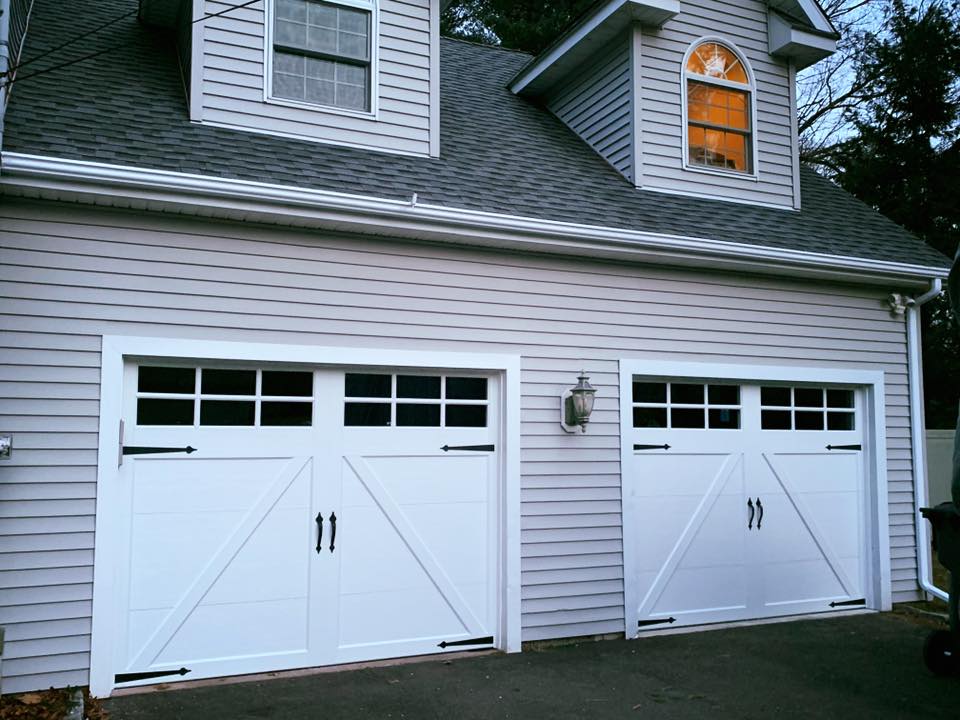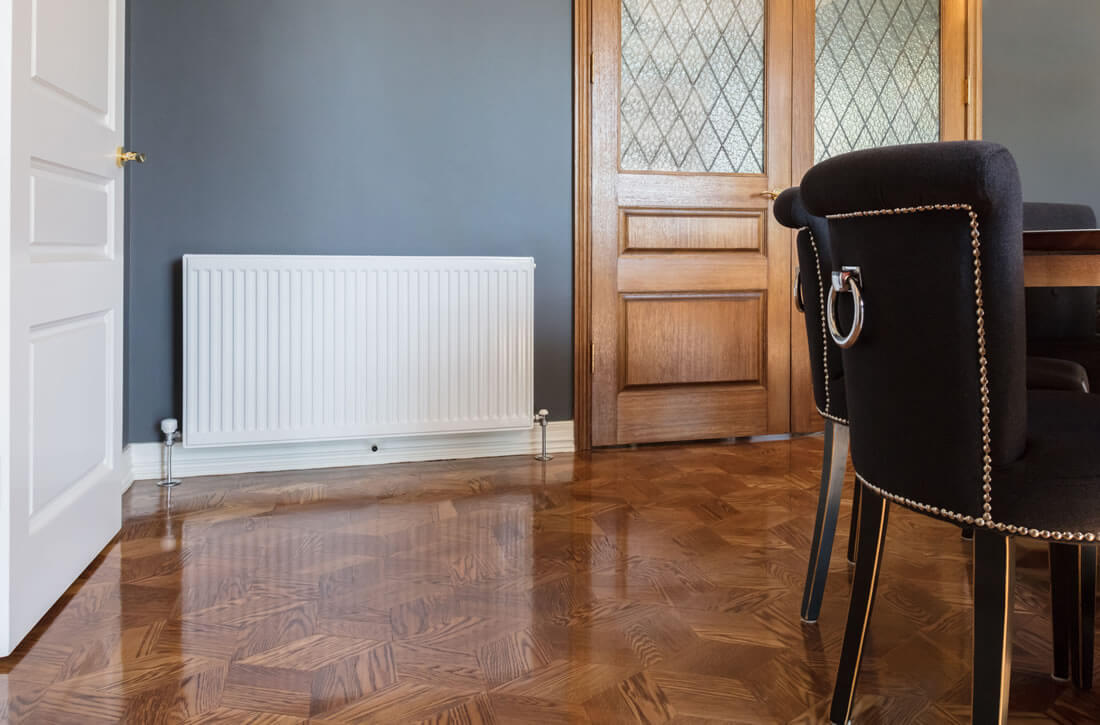If you have an uninsulated garage door to your attached garage, then you are losing money both in the winter and the summer seasons. The experts highly recommend knowing the steps on how to insulate garage doors.
Thorough studies have been done by garage door manufacturers that reveal that using an energy-efficient R-18 insulated garage door may keep your garage about 25 degrees cooler in summer and around 12 degrees warmer during winter months. Thus, there is a decrease in energy loss with the use of insulated ceilings and walls.
A new R-18 garage door costs roughly $1,400, so it does not really pay to replace your door based on energy savings alone. However, you can install additional insulation, doorstop weather stripping, and a bottom seal to your existing garage door to obtain some comfort and savings. You can easily accomplish the entire process in around 4 hours for less than $200. Just buy the materials from any home center and collect up a straightedge saw, tape measure, utility knife, dust mask, hammer, and nails. Below is the step-by-step guide on how to insulate garage doors.
A Guide on How to Insulate Garage Doors

source: residencestyle.com
Purchase the materials needed.
You may get two kinds of garage door insulation kits at home centers.
The R-value of an R-8 vinyl-faced fiberglass batting kit is relatively high. Two kits are required to insulate a conventional 16-ft.-wide garage door. Alternatively, a pre-cut R-4 expanded polystyrene (EPS) panel foam can be purchased online. Cut every panel to the appropriate length, then bend and snap it into your door’s horizontal rails.
On the other hand, EPS has the lowest R-value per inch at R-4. If you reside in a temperate area, this may be sufficient and could serve as inexpensive garage insulation.
If you are willing to perform a lot of careful cutting, you can reach a higher R-value, up to R-9.8, using 1-1/2-in.-thick foil-faced extruded polystyrene that is fire-rated (XPS). Unfaced non–fire certified XPS rigid foam must not be utilized for insulated garage doors. It is highly combustible and produces noxious gases when ignited.
Purchase doorstop vinyl weather stripping to completely seal the top as well as the sides of your garage door. You would also need a replacement vinyl bottom seal to suit your existing track, or you can purchase a new track if yours is broken.
Step 1. The retention pins should be appropriately measured, marked, and installed.
- Locate the place that is 12 in. from each of the panel’s edge and that is halfway between the horizontal rails.
- Mark the area.
- Peel the adhesive backing paper and put the retainer pin base on the panel.
Step 2. Cut batting.

source: clopaydoor.com
- Roll out the batting and mark its cutting lines with the vinyl side facing down.
- Arrange the batting on a scrap piece of plywood.
- The insulated garage door with a straightedge should be compressed using a utility knife.
Step 3. Position the batting in place.
- It would be best if you begin by cleaning every door panel with rags and household cleaning spray.
- After that, rinse the areas thoroughly using clean water and allow them to dry.
- Arrange the insulation in the panel towards the center and press it against the retaining pin until it fully punctured the vinyl facing.
- Push it over the pin until the retaining cap snaps into position.
- Attach its retaining pins.
- To make sure that the batting is cut for a snug fit, measure the width and height of every panel and add 1 inch to the width and length. Because panel sizes may vary throughout the length of the door, it is best to measure each one individually instead of pre-cutting all its panels based on a single measurement.
- Place the cut insulation in the panel, facing the vinyl side facing toward the garage.
- Attach it to the retaining pins.
- Repeat steps until all panels are thoroughly insulated.
Step 4. Install the weather stripping on the doorstop and do a test fit.

source: nwdusa.com
- Put the doorstop against the top and side jambs at a 45-degree angle to the vinyl weather stripping.
- Hold it in place temporarily by using nails pounded in just halfway.
Step 5. Adjust accordingly to accommodate the door movement.
- In order to imitate the impact of heavy wind, apply pressure on the door.
- To maintain a good seal, move the doorstop inward. The gap might not be uniform along its sides, so test it in many locations and adjust as necessary.
- Install the doorstop weather stripping on the top jamb (starting at the top of the door).
- Install the side doorstops in the same manner.
- Apply pressure to the door to imitate how much it may move in high gusts.
- Adjust the doorstop to ensure that it remains secure against the door even in windy situations.
- Hammer the nails entirely into the wood.
- If the door has too much play for the doorstop to be appropriately adjusted, or if the light is visible through the doorstop weather stripping, change your old hinges with spring-loaded counterparts that constantly press your door against the weather stripping.
Step 6. Install the new bottom seal.

source: crgaragedoor.com
The bottom track of the majority of steel doors is designed to support a vinyl seal. Sun exposure can cause the vinyl to harden and break or crack in some areas, allowing cold air to enter. Installers often crimp the slots at every end of the track to secure the seal.
- Remove the crimps from the bottom seal track slots by opening the crimps.
- Remove the previous seal.
- To gently bend out the aluminum track, use a fat-blade screwdriver into the crimped part and twist.
- Repeat on the opposite side of the track.
- Apply dishwashing detergent or silicone spray to the spaces along the bottom track.
- Then insert and pull the vinyl seal into place.
- With a utility knife, trim away any excess vinyl and crimp the track’s ends by using a pair of pliers.
- Slide the new bottom seal in.
Step 7. Check and test the garage door.
If you lift a perfectly balanced garage door halfway and let go, it should remain in place. Insulation, though, adds more weight to the door, which may throw the balance off. If the garage door will after you let go, contact a garage door servicing professional to re-tension the springs. Allowing the door to remain imbalanced can result in damage to the garage door opener.



